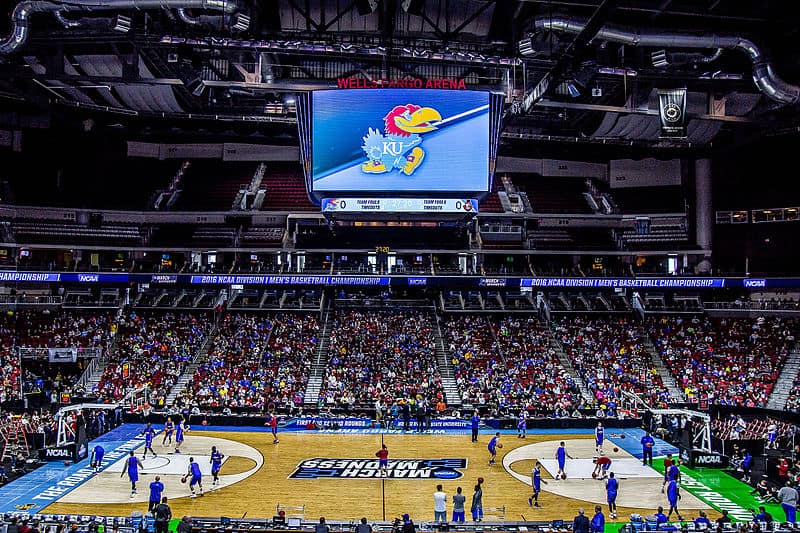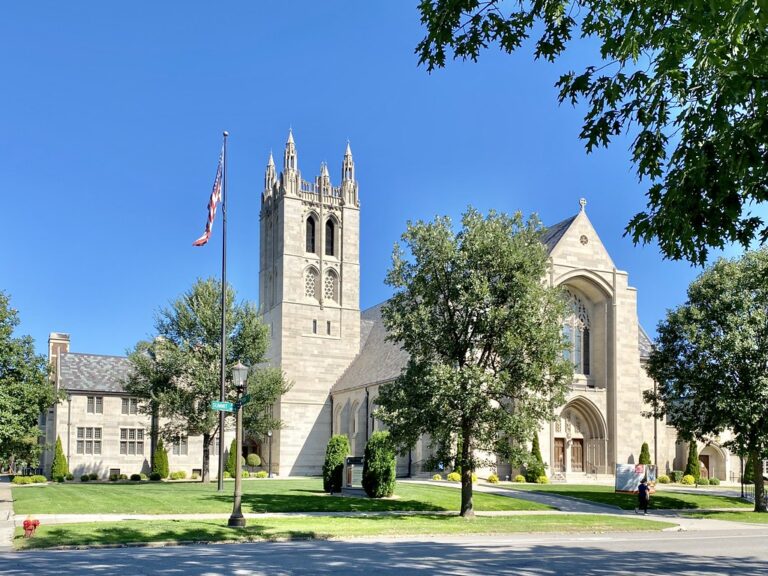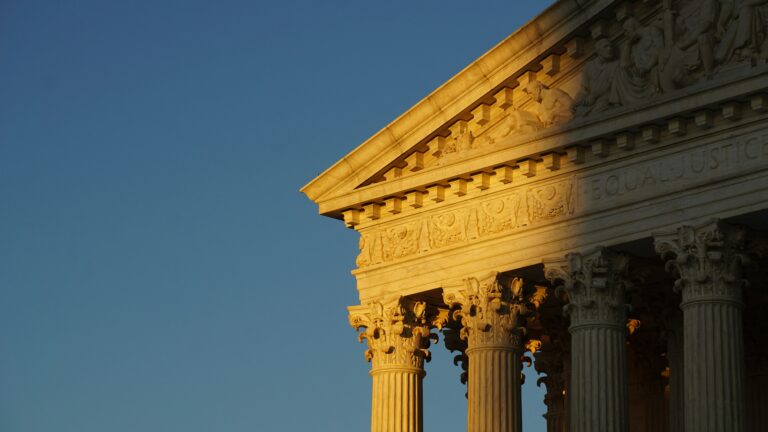
Fred Wang is a student at Harvard Law School.
This spring, the National Collegiate Athletic Association (NCAA) is slated to generate nearly a billion dollars in revenue from its annual March Madness men’s basketball tournament. But only a small pinch of it (in the form of cost-of-attendance scholarships and modest academic achievement awards) will go directly to the competing student-athletes themselves—the majority-Black core of the NCAA’s billion-dollar enterprise. That’s largely because various NCAA bylaws restrict both what kind and how much its member institutions can offer recruits in the “market” for their labor. Such rules have contributed to a gross disparity in collegiate athletics, where certain coaches might be paid seven-figure salaries while over 40% of Division I football and men’s basketball players report not having enough money to purchase basic necessities such as food. All of that and more stands to change as the Supreme Court—after hearing oral argument last Wednesday—considers its first college sports antitrust lawsuit in over three decades.
The case is NCAA v. Alston. At issue is whether NCAA restrictions on non-cash education-related benefits—postgraduate scholarships, uncapped academic achievement incentives, and the like—for college athletes violate federal antitrust laws by capping what colleges are allowed to offer recruits in the “market” for their labor. More specifically, Alston poses two core questions for the Court. First, are the NCAA’s compensation restrictions entitled to broad antitrust immunity because they ostensibly preserve the uniquely amateur character of college sports and thereby serve the procompetitive purpose of providing sports consumers a distinct product? And, second, if not, in light of that alleged procompetitive purpose, are the rules sufficiently reasonable to constitute permissible restraints on trade?
The case then turns, in part, on language from the high Court’s seminal and sole other college sports antitrust case: NCAA v. Board of Regents. The excerpts in question—quoted no less than 22 times in the NCAA’s brief—are worth reproducing in full:
[T]he NCAA seeks to market a particular brand of [sports] — college [sports]. The identification of this “product” with an academic tradition differentiates college [sports] from and makes it more popular than professional sports… In order to preserve the character and quality of the “product,” athletes must not be paid, must be required to attend class, and the like…
The NCAA plays a critical role in the maintenance of a revered tradition of amateurism in college sports. There can be no question but that it needs ample latitude to play that role, or that the preservation of the student-athlete in higher education adds richness and diversity to intercollegiate athletics and is entirely consistent with the goals of [federal antitrust laws].
If the student-athletes are successful, the labor implications of Alston for college athletes will be threefold: (1) the immediate practical effects of enjoining various NCAA rules that limit student-athlete compensation for their labor, (2) the potential spillover effects of eroding other NCAA amateurism rules that preclude college athletes from monetizing their athletic talent, and (3) the broader doctrinal consequences of narrowing what “amateurism” in college sports entails.
First, a favorable ruling for the student-athletes would have immediate consequences for the NCAA’s restraints on non-cash education-related benefits and, therefore, for the ability of college athletes to profit from their labor. In the market for student-athlete labor, schools would be able to offer recruits—in addition to the cost-of-attendance scholarships currently permitted under NCAA rules—a whole new array of benefits designed to facilitate their academic achievement.
Second, a favorable ruling for the student-athletes might implicate not only the education-related benefits caps specifically at issue in Alston, but also, potentially, the NCAA’s other amateurism rules that preclude college athletes from monetizing their athletic talent—say, rules that prohibit athletes from receiving money for endorsing a commercial product or from using their name and appearance to promote their own business.
For one, in line with the skepticism Justices Kagan and Kavanaugh expressed at oral argument, the Court might reject the NCAA’s argument that consumer demand for collegiate sports is driven by restraints on student-athlete compensation and not by, for instance, the rich history of intercollegiate rivalries, alumni connections to the competing schools, or the unique intensity of collegiate competition. Accordingly, the Court might find that there is simply no procompetitive justification for any of the NCAA’s rules that limit the ability of college athletes to monetize their athletic talent, given that such rules are not key to preserving the NCAA’s core product.
Or the Court might note that, in light of the billions of dollars top-tier college basketball and football players now help generate their respective schools, it no longer makes sense for the NCAA and its member institutions to commercially exploit and financially stunt their student-athletes on the basis of an archaic “amateurism” justification. Justice Alito said as much in his opening question for the NCAA during oral argument. And as a Ninth Circuit judge observed, “an ordinary person of common sense [reacting to how federal antitrust law has been applied to college athletics] would… exclaim[], ‘[if that is the law], the law is a ass—a idiot.’”
Third and finally, as some have noted, in clarifying its holding in Board of Regents, the Court’s decision will generate “wide ripple effects throughout the law even beyond the fairly limited antitrust question” immediately before it. Take the issue of student-athlete employment status. In recent years, there has been much litigation over whether student-athletes qualify as “employees” under the Fair Labor Standards Act (FLSA). Courts, in adjudicating that question, have often invoked the above-quoted language from Board of Regents to hold that student-athletes do not. For example, in Berger v. NCAA, the 7th Circuit held that track-and-field student-athletes were not “employed” by their respective schools in part because the “economic reality” of their relationship was defined by the “long-standing tradition” of amateurism reflected in Board of Regents. In Dawson v. NCAA, a district court looked to the same language in Board of Regents to reject the characterization that student-athletes were employed by the NCAA, noting that “not paying student-athletes is precisely what makes them amateurs.”
But if the Court in Alston rejects the “no pay” model of amateurism and holds instead that, say, “student-athletes being college students is precisely what makes them amateurs,” then courts going forward may be much more inclined to recognize the existence of a labor-for-compensation employment relationship between colleges or the NCAA and their revenue-generating student-athletes. The potential consequences of such recognition would be far-reaching—extending from issues of minimum wage or worker’s compensation entitlement to university accountability for campus sexual assault perpetrated by student-athletes.
To be sure, all of this and more could be accomplished through legislation. Indeed, Congress is currently considering a variety of proposals that aim to more evenly distribute the revenue generated by collegiate athletics programs and to codify the ability of student athletes to earn endorsement money. In certain respects, the death knell for the NCAA business model has already been tolled. Nevertheless, Alston furnishes the Court with the opportunity to initiate the inevitable: to hold that in the conflict between the rights of college athletes to profit from their own labor and the ostensible longstanding commitment of the NCAA to an evermore incoherent and exploitative conception of “amateurism,” tradition must yield.









Daily News & Commentary
Start your day with our roundup of the latest labor developments. See all
December 22
Worker-friendly legislation enacted in New York; UW Professor wins free speech case; Trucking company ordered to pay $23 million to Teamsters.
December 21
Argentine unions march against labor law reform; WNBA players vote to authorize a strike; and the NLRB prepares to clear its backlog.
December 19
Labor law professors file an amici curiae and the NLRB regains quorum.
December 18
New Jersey adopts disparate impact rules; Teamsters oppose railroad merger; court pauses more shutdown layoffs.
December 17
The TSA suspends a labor union representing 47,000 officers for a second time; the Trump administration seeks to recruit over 1,000 artificial intelligence experts to the federal workforce; and the New York Times reports on the tumultuous changes that U.S. labor relations has seen over the past year.
December 16
Second Circuit affirms dismissal of former collegiate athletes’ antitrust suit; UPS will invest $120 million in truck-unloading robots; Sharon Block argues there are reasons for optimism about labor’s future.